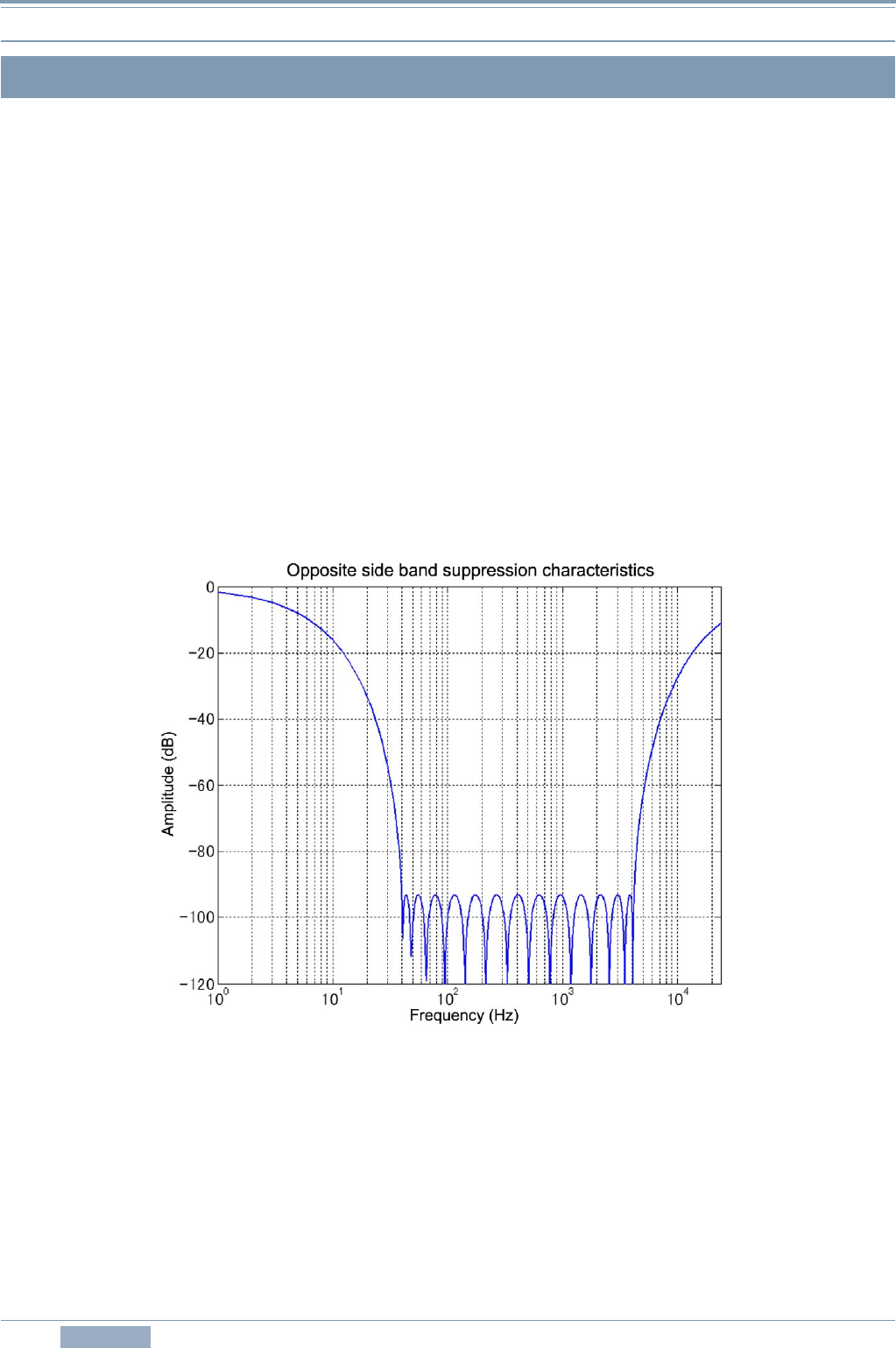
4 DSP
28 CONTENTS TS-590S
Following is how the TX signal is processed. The audio signal captured from the microphone or an
external terminal is first processed by the bandwidth-limiting filter, microphone gain control, speech
processor or VOX, and then, in SSB and AM modes, the signal is modulated and output as an IF
signal; in FM mode, a CTCSS tone signal is added.
In CW mode, the waveform of the keying input is shaped and then the signal is multiplied by the
modulating carrier to be transmitted as an IF signal. At the same time, the signal is multiplied by a
carrier for monitoring to produce a CW sidetone.
In FSK mode, the keying input is processed by a baseband filter for bandwidth limiting, and then the
signal is processed by frequency modulation with the 24 kHz center frequency to obtain an FSK
modulated wave. As in CW mode, for the purpose of monitoring, the audio center frequency based
on the FSK tone frequency setting in the menu mode is processed by frequency modulation to obtain
the monitoring audio.
In SSB mode, the proven PSN design continues to be adopted for modulation. Unlike for
demodulation, for modulation enough sideband suppression must be provided for the bandwidth of
the modulation input. The characteristics of the PSN are designed to deliver sufficient suppression
according to the characteristics of the bandwidth-limiting filter (Figure 4-9).
Figure 4-9 Opposite Sideband Suppression Characteristics of the PSN for SSB Modulation
The bandwidth-limiting filter for transmission that can be set in the menu mode is applied to SSB and
AM modes, but in SSB mode the filter is made sharper at 3 kHz.
4.5 Modulation


















